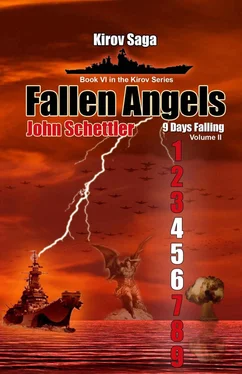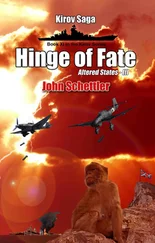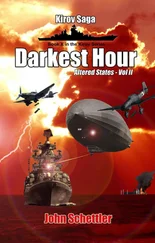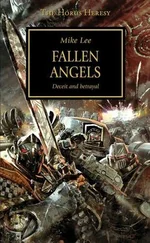“What was their response?”
“They say we can go to hell, sir. They’re coming.”
Karpov’s eyes narrowed. “We can go to hell, is it? Very well, gentlemen. Let’s show them what the real estate there looks like.”
“If you’re going to try, go all the way. Otherwise, don’t even start. …You will be alone with the gods, and the nights will flame with fire. You will ride life straight to perfect laughter. It’s the only good fight there is.”
~ Charles Bukowski,
Factorum
“Cruisemissiles positively identified now, sir,” said Haley on the Argos Fire . The radar man was at the Sampson system, his head and hands protected by white flash proof headpiece and gloves as he worked. “Those are SS-N-27s, subsonic and coming in at 15,000 feet. Looks like they’re targeting Princess Irene, and they’re getting close. They’ll be diving soon, sir. ”
A good play, thought Captain MacRae. Princess Irene is still north of Poti and we’re down here well to the south. I didn’t think they’d make this move, but here it is. Some bastard has decided he hasn’t enough arrows in his quiver to get us all, so he’s using his longest range asset to go after the closest target.
“ Iron Duke is firing more Sea Ceptors, sir!” Haley’s voice was edged with the excitement of battle.
The Russian Black Sea Fleet had been ready for mothballs for years, but now it came out to fight like an old boxer with new legs. The old flagship, Moskva , was renamed Slava and sent to Severomorsk in 2018 where its most significant accomplishment had been towing and placing target barges for live fire exercises. The cruiser Kerch was retired, leaving only two old Krivak class frigates that had been rusting away for years. To save face, however, the Russians delivered three new frigates, the Admiral Grigorovich , the first of its class, along with Admiral Essen and Admiral Makarov.
Built in Kaliningrad, they were laid down between 2010 and 2012 and delivered to the fleet by 2018. Much more had been planned and promised, but never came. So the Black Sea Fleet was in no position to do much of anything in a general war. Its best play would have been to stand on defense, but seeing an opportunity to hurt the West by further restricting its access to oil and gas supplies, Captain Sergei Pomilov took his three new frigates out that day for a trial by fire, with the two old Krivaks in the vanguard of his tiny fleet. The Captain didn’t have much to shoot with on his five ships, but there were some fairly inviting targets to his south, three fat oil tankers escorted by a pair of British warships, and he had a few missiles that could hurt them badly. He sortied to take a position NNE of Poti, just under 300 kilometers, approaching the maximum range of his cruise missiles.
True to form, he coordinated a combined air/sea operation that day, sending in all that was left of his 43rd Independent Naval Shturmovik Air Assault Squadron. They were flying SU-24s on a saturation SEAD mission to try and suppress the enemy radars in the two British escorts. One had been identified as the frigate Iron Duke , and the other was simply reported as a Daring class destroyer. To see British ships this close to Russian home waters was rare down here. They held the line against the Northern Fleet in the Atlantic, but seldom entered the Black Sea. Pomilov planned to make them pay a high price of admission this time, and he set his sights on the nearest oil tanker, seeing it as easy prey.
The SU-24s came in with the element of surprise, but the British were not sleeping and were quick into action with their newest SAM defense systems. They proved more than capable, and the SU-24 pilots were not able to get anything through for a hit, losing one plane for their trouble. Yet Pomilov had also let loose with a salvo of anti-ship missiles.
The three new frigates had eight missiles each, four speedy Oniks at Mach 2.5 and four of the subsonic 3M-54E Klub cruise missiles, the same P-900 “Sizzler” as on Kirov, with improved range to 370 kilometers. He fired the cruise missiles first from all three ships, a salvo of twelve missiles heading south through the dark skies.
* * *
CaptainIan Williams on HMS Iron Duke was point man in the battle now. His ship was standing picket duty about twenty kilometers NNE of Princess Irene , close enough to cover the tanker with his Sea Ceptors. He was also about 300 kilometers southeast of the Russian formation, feeling just a little lonesome as he considered the tactical situation.
He read five ships in the Russian formation, three newer frigates, and two old Krivaks that were of no concern. They were ASW ships and most likely only there to form a screen. His XO was keen to point that out as they studied the chart plot board, ready to engage. Williams took a long draw on his pipe, filling the air around them with the aromatic smell of Top Black Cherry. He seemed calm and unruffled, in spite of the fact that they had just been in the thick of it, beating off a SEAD strike by a gaggle of Russian SU-24s, and now they were tracking a salvo of cruise missiles closing on their position at just under Mach 1.
“ Sea Ceptors engaging this salvo now, sir,” said XO Lt. Commander Colin Firth. The missiles were a ‘soft launch’ system, piston ejected from the forward deck VLS canisters and then turned over by gas jets before their main engine would ignite to send them on their way. Iron Duke had the new ‘Quad Pack’ that housed four missiles in each of her 32 firing tubes, giving her a considerable inventory of 128 missiles. They had fired 32 of these already to repulse the SEAD attack off those SU-24s, and Williams was more than pleased with the results.
Now he watched another salvo firing, but the target had already completed its subsonic cruise phase and was diving steeply for the deck to begin its final supersonic run. It was missile against missile now, each about the same speed, one with active radar seekers probing the darkness to find its prey, the other executing a series of pre-programmed maneuvers as it settled into its sea skimming run and rapidly accelerated towards Mach 2.5 They had to get them all as they came in, and Williams watched as they recorded kill after kill. Yet the range was diminishing rapidly and two of the twelve were good enough to evade the defensive salvo. Williams saw them streak by the ship in the distance, two bright fiery tails well off his port quarter. They were obviously bearing down on Princess Irene , and they were well out of range of the ship’s close in gun systems.
“Once again, gentlemen,” he said, “and be quick about it.”
Four more Sea Ceptors were launched, accelerating rapidly in pursuit, but the Sizzlers were now burning full out and were reaching their maximum speed. The Ceptors could not catch them, and both hit their target with a thundering explosion. The heavy warhead blew through the outer hull and their kinetic impact started a raging fire in the tanker’s fuel compartments. The combined force of the two missiles put 800 kilograms of explosive power on the ship, and the rest of the damage was done by the burning oil. It was a fire that would not be put out by any means, and the ship was doomed. Fairchild had lost its youngest daughter, and the bridge crew on the Russian flagship, Admiral Gigorivich, clenched their fists in a victory cheer. First blood in the battle was their claim now, black oily blood spreading over the sea near the stricken tanker and surrounding it in a halo of fire.
Читать дальше











